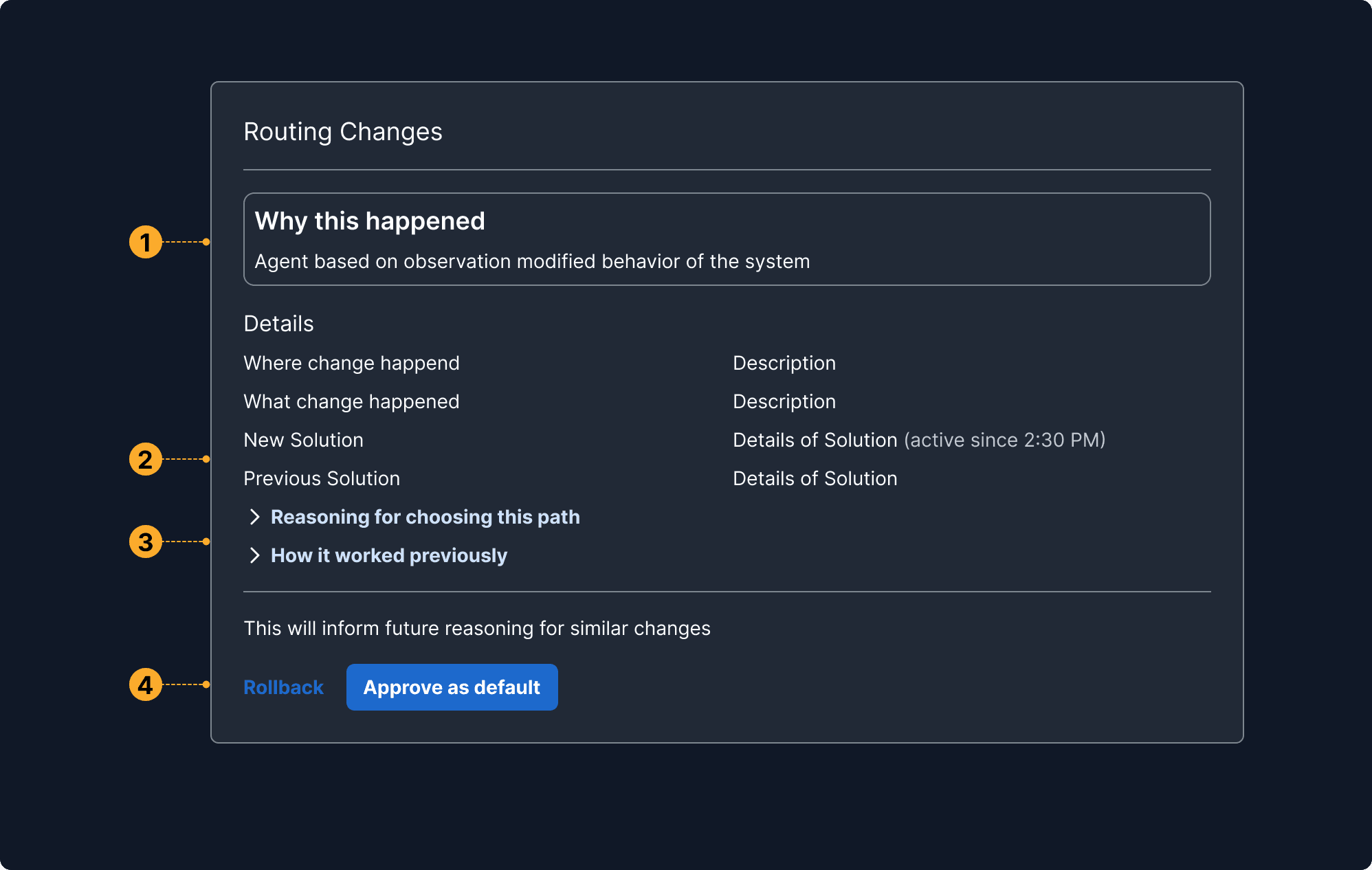
Traceability
Make agent behavior visible, searchable & open to review
What it means
Why this matters
Related patterns

Make events time-stamped and ordered
List all system and human actions in a clear sequence. Timestamps build trust and help reconstruct events during audits or investigations.
Include cause and effect where possible
Show how one step led to the next. This helps users understand the rationale and logic behind changes.
Capture both automated and manual steps
Record not just user input, but also system decisions. A full picture improves transparency and enables accountability across the workflow.
Use clear, plain language
Write log entries in simple, readable terms, no code dumps or vague system jargon. Everyone should be able to follow what happened.

Use side-by-side comparisons
Display the original and updated states in parallel columns. This helps users spot differences immediately without extra mental effort.
Include the why, not just the what
Pair the visual change with a short explanation of the reason or logic behind it. This gives context and supports better decision-making.
Highlight what changed
Use color or styling to draw attention to fields or values that were modified. Don’t make users guess what’s different.
Let the user validate or intervene
Offer a clear way to accept, reject, or adjust the change. Visual diffs should inform action, not just display information.

Call out what triggered the change
Clearly state the condition or threshold that caused the system to respond differently than before.
Compare past vs. present behavior
Provide users a way to see what’s new vs. what used to happen. This helps them understand system learning and decide if further intervention is needed.
Explain the system’s current decision logic
Let users understand why the system acted in this instance and how it may influence future behavior. Clearly indicate whether this decision reflects a one-time response or an evolving pattern.
Allow control or rollback
Include an option to undo, override, or adjust the system’s adaptive behavior.